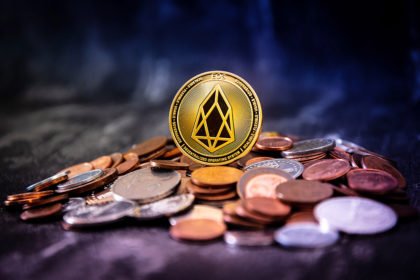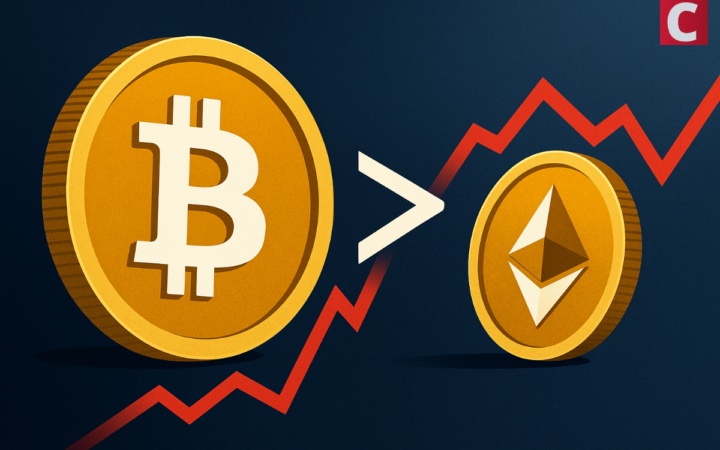EOS has only recently entered the cryptocurrency market but has already made a name for itself. It’s ICO campaign raised over $1 billion making it one of the most successful ICO’s of all time. Some people even call EOS an “Ethereum Killer” due to their similarity but EOS’s superiority in number of transactions per second.
To be precise, EOS is able to conduct around 1000 thousands transactions per second vs 15 transactions on Ethereum blockchain and only 7 on Bitcoin. Such a low channel capacity causes higher transaction fees and forces users to postpone their transactions. EOS solved this problem to some extent and is able to scale up with ease.
However, as many other creations of human kind, EOS is imperfect. Many see this imperfection to come from a high barrier of entry into EOS community in a form of paid account creation and complicated procedures. Especially when account prices have been rising. So why should you pay for a new EOS account?
To answer this question, we first need to look at how other cryptocurrencies operate. When you use Bitcoin and Ethereum you pay a fee for operational power of a transaction. It is easy to see how it works on Ethereum blockchain where the cost of transaction is expressed in a form of gas price.
EOS took a different approach, wherein when creating an account you have to buy out some of the operational power, granting you ownership of the network. To be precise, you are paying for CPU power, Bandwidth and most notably RAM space. RAM stands out as it is the priciest out of those three and we should see why a bit latter.
For now let’s justify EOS’s approach. First off all, receiving ownership of the tokens not only allows account holders to access the blockchain and its features but also control it to some extend with the voting system imbedded in EOS functionality. You can see how this becomes an opportunity to establish a long term, trusting relationship with developers, users and investors.
Another way to think about this is using many real-world examples where we prefer to own rather than rent. Most notable of those is house. You feel more secure if you own it. As well as that, in long term it’s cheaper to own. By paying once for the account you get out of regular payments. This is especially useful for those who are looking to use EOS on regular basis. It is also important to mention that unlike transaction fees, you will be able to return you investment. At any time, there is an option to sell back your computational power at the current market price.
That all sounds great, but what about the problems with account creation? Since EOS’s ICO has ended it became much harder to enter the EOS community. Initially you could only do so via an invitation from an already existing member. However, recently, there appeared a simple Dapp “singupeoseos”, which creates an account for you without any additional fees for provided service. More similar methods will be popping up in the future to ease this process, so it shouldn’t be a problem.
The more significant issues is an increase in price for account creation. As I mentioned earlier RAM plays an important part in this issue. Minimum amount of RAM required to set up an account is 4KB. Due to increase in popularity of EOS, many new accounts are being created and so demand for RAM is rising. However, available RAM is limited and it is hard to increase it fast.
Therefore, supply is not rising at a same rate. Whoever is familiar with basics of microeconomics would know what I am leading to. Such a market behavior leads to an increase in price. This is exactly what we are observing: a stable increase in account price due to issues with RAM availability.
We hope this issue won’t last for long. What’s great about EOS is its tight community and responsive developers. This issue has already been addressed and there are few ways in which it will be solved in the near future.
More than 60% of bought out RAM is actually unused. EOS is looking to decrease the amount of compulsory RAM per account to 1.5KB and make it easier to buy additional when required. Even then, if there is any spare RAM space left on your account, you will be able to rent it out in return for EOS tokens.
To find out more about EOS account schema, it’s problems and potential solutions, you can follow Dan Larimer’s Medium blog.
It is safe to say that EOS’s account schema is a unique and promising approach. Even with all its drawbacks it does not concede to other approaches. Furthermore, this schema has a potential to become superior, if developers manage to solve the problems with accessibility and RAM price. With a team of such a responsive and creative developers EOS has a bright future and we shall follow them closely on their path to success.
Disclaimer: Coinspeaker is committed to providing unbiased and transparent reporting. This article aims to deliver accurate and timely information but should not be taken as financial or investment advice. Since market conditions can change rapidly, we encourage you to verify information on your own and consult with a professional before making any decisions based on this content.

Alex Phenom is the founder of Phenom.team, where he leads the research and development of ICO platforms and offers solutions through blockchain technology.





